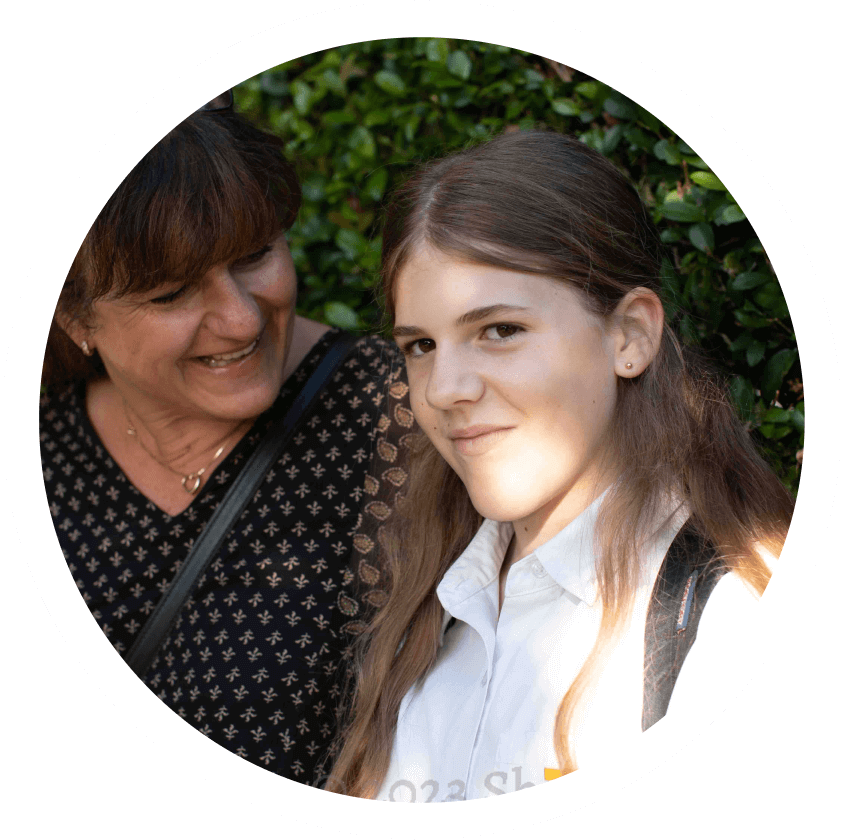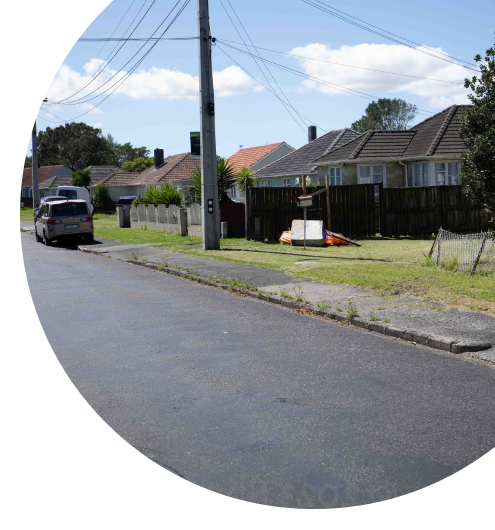Young people's experiences of depression and anxiety symptoms
Mental health includes emotional, psychological, and social wellbeing and affects our thoughts, feelings, behaviour and physical health. Depression and anxiety are two of the most prevalent mental health conditions worldwide (1-3). When experienced during adolescence, there can be declines in quality of life, cognitive and socioemotional development, ability to perform daily tasks, maintain relationships and enjoy activities. There is also an increased risk of substance abuse, unemployment, self-harm and suicide (4-25). As these mental health concerns affect approximately 20% of New Zealanders (26-28), understanding factors associated with mental health is critical for informing interventions, public health programmes, and policies that may promote wellbeing.
Looking for support?
If you think you, or someone you know, may be experiencing poor mental health, there are several free tools or services that can help. See the Ministry of Health website for a list of resources or click below for information or support:

- Mothers reported that approximately 5% (n = 227) of young people had been diagnosed by a doctor with depression and/or anxiety.
- In the last 12 months, mothers reported that 8.8% (n = 373) of young people had contact with mental health services.
- Over half (57.6%; n = 215) of young people who engaged with mental health services "received all they needed".
- For young people who had contact with mental health services but did not receive all they needed (39.4%; n = 147), the most frequent barriers to engagement with mental health services included COVID-19 restrictions or lockdowns, the child was not eligible, and not being able to get an appointment/the service was not accessible.
- Depression symptoms slightly increased from 8 to 12 years old.
- Over 52% of young people had an increase in depression symptoms.
- Higher depression symptoms at age eight were significantly associated with higher depression symptoms at age 12.
- Transgender or non-binary young people reported the highest levels of depression symptoms at 12 years old and the largest increase from 8 to 12 years old.
- Individuals experiencing the highest area-level deprivation had higher depression symptoms.
- Rangatahi Māori reported the highest levels of depression symptoms at 12 years old compared to European young people.
- Anxiety symptoms slightly decreased from 8 to 12 years old.
- Higher anxiety symptoms at age eight were significantly associated with higher anxiety symptoms at age 12.
- While most young people had a decrease in anxiety symptoms, over one-third (37.2%) had an increase in anxiety symptoms from 8 to 12 years old.
- Transgender or non-binary young people reported the highest levels of anxiety symptoms and an increase in anxiety symptoms from 8 to 12 years old compared to a decrease observed for cisgender girls and cisgender boys.
- Stronger peer and parent relationships were associated with lower depression and anxiety symptoms.
- Being bullied and having poorer mental health at 8 years old was associated with higher depression and anxiety symptoms for young people at 12 years old.
This snapshot reports young people’s experiences with mental health services and their experiences of depression and anxiety symptoms.
It explores how depression and anxiety symptoms may be different for three key demographic groups (gender, ethnicity, and deprivation). It examines changes in depression and anxiety symptoms from 8 to 12 years old and factors that may influence these outcomes.
At the 12 year data collection wave (DCW), mothers reported their child's diagnosis of depression or anxiety and their engagement with mental health services. Depression and anxiety symptoms were self-reported by young people when they were 8 years old and again at 12. We used frequency statistics and regression methods in our data analyses to assess how depression and anxiety symptoms may be associated with other factors. See supplementary materials for more information.

What is Depression?
Individuals experiencing depression typically report multiple symptoms for two or more weeks and describe feeling sad, worthless, or guilty, less enjoyment in activities they used to enjoy, low energy, trouble sleeping or sleeping too much, changes in appetite and weight, difficulty concentrating or making decisions, and thoughts of death or suicide (4).
People experience depression differently and some may experience it without a clinical diagnosis. Some people may recover through a combination of self-care, lifestyle changes, and support from loved ones. However, many people who experience poor mental health do not seek help or may be unable to access mental health services. A lack of support can lead to more severe symptoms and other adverse mental and physical health outcomes.

What is Anxiety?
Anxiety is a natural, healthy response to stressful situations that can be beneficial. It can help motivate a person to act, solve problems, or stay alert and focused. However, stressful feelings can be problematic if they do not go away, are extreme for the situation, feel uncontrollable, or impact a person's social, family or work/school life.
Anxiety symptoms may include feeling restless or on edge, muscle tension, fatigue, being irritable, trouble falling or staying asleep, and difficulty concentrating, among other symptoms (4). It can impact people's ability to cope with daily activities, perform at work or school, maintain relationships, and avoidance of anxiety-provoking situations may impact multiple domains of young people's lives. If left untreated, anxiety symptoms may worsen over time and impact a person's quality of life and development.

Measuring diagnosis of Depression and Anxiety and engagement with mental health services
Young people's diagnosis of depression or anxiety and their engagement with mental health services were reported by the participants' primary caregiver, usually their mother.
Diagnosis: Mothers reported if their child had ever been diagnosed by a doctor with anxiety and/or depression.
Engagement with mental health services: Mothers report if their child, in the past 12 months, had contact with mental health services (e.g., psychologist, psychiatrist, specialist mental health nurse, specialist mental health community worker, counsellors, social worker).
Experiences with mental health services: Only participants who reported their child had contact with mental health services in the last 12 months were asked about the child’s experience (i.e., the child; “Received all they needed”; “Received some of what they needed”; “Did not receive what they needed at all”; “Don't know”).
Barriers to engagement: Only participants who reported their child “received some they needed” or “did not receive what they needed” were asked about barriers to engagement with mental health services.

Measuring Depression Symptoms
Depression symptoms were measured using the self-reported 10-item Centre for Epidemiologic Studies Depression Scale for Children (CES-DC-10) (29). Items are summed to create a depression score. Depression score can range from 0 to 30, with higher scores indicative of greater depression symptoms. See supplementary materials for more information.

Measuring Anxiety Symptoms
Anxiety symptoms were measured using the 8-item Patient-Reported Outcomes Measurement Information System (PROMIS) Paediatric Anxiety - Short Form 8a questionnaire (using Item Bank v2.0) (30). The 8-items can be summed and converted into a standardised score (T-score). Scores range from 33.5 to 83.3, in which higher scores indicate higher anxiety symptoms. See supplementary materials for more information.
Insight one
Mother report of young people’s engagement with mental health services.

Engagement with mental health services in the last 12 months:
8.8% (n = 373) of young people had contact with mental health services.
55.1% (n = 125) of young people
with a diagnosis of depression or anxiety (n = 227) engaged with mental health services.
6.1% (n = 244) of young people
without a diagnosis of depression or anxiety had engaged with mental health services.
Note: Engagement with mental health services in the last 12 months includes both public and private mental health services.

Experiences with mental health services:
57.6% (n = 215) of young people who engaged with mental health services "received all they needed".
31.1% (n = 116) of young people "received some of what they needed".
8.3% (n = 31) of young people "did not receive what they needed at all".
2.9% (n = 11) of mothers reported they "don't know" if their child got the help they needed.

Barriers to engagement with mental health services:
Of the young people who had contact with mental health services but did not receive all they needed (39.4%; n = 147) the most frequent barriers to engagement with mental health services included:
33.3% (n = 49) due to COVID-19 restrictions or lockdowns.
29.2% (n = 43) were not able to get an appointment or the service was not accessible.
15.0% (n = 22) of young people were not eligible.
Other reasons included previous bad experiences with mental health services, unclear how to access services, the service did not meet their needs, not finding a therapist or counsellor they thought understood them, and the cost of services being too high.

Insight two
Depression symptoms for young people at 12 years old.
Young people reported an average level of depression symptoms of 8.50 on a scale from 0 to 30, with higher scores indicative of greater depression symptoms. More information can be found in the supplementary materials.

Transgender or non-binary young people reported the highest levels of depression symptoms, followed by cisgender girls and then cisgender boys (Figure 1A).
Young people living in the most socioeconomically deprived neighbourhoods (NZ Deprivation Index quintile 5) reported the highest depression symptoms at 12-years. Young people living in the least deprived neighbourhoods (quintile 1) reported the lowest levels of depression symptoms (Figure 1B).
Depression symptoms were patterned by ethnicity. Mean depression scores were higher for rangatahi Māori than for the Sole European group (Figure 1C).
Note. The middle line represents the median value. The grey dot in the middle represents the mean value, and the ends of the box represent the 25th and 75th quartile, respectively. Coloured dots represent outliers for each group.
Insight three
Anxiety symptoms for young people at 12 years old.
Young people reported an average level of anxiety symptoms of 46.0 on a scale from 33.50 to 83.3, with higher scores indicative of greater anxiety symptoms.
Transgender or non-binary young people reported the highest levels of anxiety symptoms, followed by cisgender girls and then cisgender boys (Figure 2A).
There were no differences in mean anxiety symptoms by socioeconomic deprivation (Figure 2B).
There were no differences in mean anxiety symptoms by ethnicity (Figure 2C).

Participants who reported more than one ethnic group are counted once in each group reported, except for the "Sole European" group which includes those young people who only identified as European. The middle line represents the median value. The grey dot in the middle represents the mean value, and the ends of the box represent the 25th and 75th quartile, respectively. Coloured dots represent outliers for each group.
Insight four
Changes in young people's depression symptoms from 8 to 12 years old.
On average, young people reported a one-point increase in depression symptoms from 8 to 12 years old on a scale from 0 (no depression symptoms) to 30 (high depression symptoms). Higher depression symptoms at age eight were significantly associated with higher depression symptoms at age 12. Over half (52.4%; n = 2146) of young people in the Growing Up in New Zealand study reported an increase in depression symptoms from age 8 to age 12.

Transgender or non-binary young people and cisgender girls reported significantly higher levels of depression symptoms than cisgender boys, after adjusting for depression symptoms at age 8 (Figure 3A).
Young people experiencing the highest area-level deprivation had marginally higher depression symptoms compared to those experiencing the lowest area-level deprivation at 12 years of age, after adjusting for depression symptoms at age 8 (Figure 3B).
Differences in depression symptoms between ethnic groups from age 8 to age 12 were small. Rangatahi Māori had marginally higher depression symptoms compared to Europeans at 12 years of age, after adjusting for depression symptoms at age 8 (Figure 3C).
More information can be found in the supplementary materials.
Note. Total response ethnicity was prioritised to create exclusive categories for statistical analysis. The Ministry of health protocol originally developed by Statistics New Zealand was used to allocate each participant to a single Level 1 ethnicity.
Insight five
Changes in young people's anxiety symptoms from 8 to 12 years old.
On average, young people had a 2.4-point decrease in anxiety scores from 8 years old to 12. However, higher anxiety symptoms at age 8 were significantly associated with higher anxiety symptoms at age 12. While most young people reported a decrease in anxiety symptoms, 37.2% (n = 1535) reported an increase in anxiety symptoms.



Transgender or non-binary young people reported an increase in anxiety symptoms from 8 to 12 years old. Transgender or non-binary and cisgender girls had significantly higher levels of anxiety symptoms compared to cisgender boys at age 12 when adjusting for anxiety symptoms at eight years of age (Figure 4A).
No differences were observed for anxiety symptoms when comparing area-level deprivation quintiles (Figure 4B).
Differences in anxiety symptoms between ethnic groups were small, and these differences tended to become less pronounced over time. Over time, rangatahi Māori and Pacific young people had a marginal decrease in anxiety symptoms compared to Europeans who reported the lowest level of anxiety symptoms at 8 year and similar levels to rangatahi Māori at 12 year.
More information can be found in the supplementary materials.
Note: Total response ethnicity was prioritised to create exclusive categories for statistical analysis. The Ministry of health protocol originally developed by Statistics New Zealand was used to allocate each participant to a single Level 1 ethnicity.
Insight Six
Factors associated with depression and anxiety symptoms at 12 years old.
It is well known that several factors are related to mental health across the life course. There are some critical demographic variables which have a known relationship with mental health such as ethnicity, gender, and deprivation.
Thus, these variables have been explored (reported above) and were included in the multivariate modelling. To investigate some other factors, univariate regression was conducted to assess which factors were associated with depression and anxiety symptoms at 12 years old, including: anxiety or depression symptoms at 8-years-old, material hardship, household structure, residential mobility, child-parent relationships, peer-child relationships, bullying, mothers’ age during pregnancy, mothers’ education, mothers antenatal perceived stress, and mothers’ depression symptoms.
This list is not exhaustive, but captures some important factors related to mental health outcomes. Factors that were significant at the univariate level were included in multivariate analysis along with critical demographics (gender, ethnicity, deprivation). Factors associated with either an increase (blue) or decrease (green) in depression and anxiety symptoms at 12 years old in the multivariate analysis are presented in Figures 5 and 6, respectively.

.png)



Factors associated with higher depression symptoms at 12 years old:
Being transgender/ non-binary or a cisgender girls.
Being bullied more frequently.
Less supportive peer and parent relationships.
Higher depression symptoms at 8 years old.
Higher mothers' depression symptoms at 12 year.
Factors associated with higher anxiety symptoms at 12 years old:
Being transgender/ non-binary or a cisgender girls.
Being bullied more frequently.
Less supportive peer and parent relationships.
Higher anxiety symptoms at 8 years old.
.jpg)
Full multivariate modelling can be found in the supplementary materials.
.jpg)
Full multivariate modelling can be found in the supplementary materials.
Relevance for policy
and practice.

.png)

What are young people’s experiences with mental health services?
Over half (57%) of young people who engaged with public or private mental health services "received all they required". For those who did not receive all they required, 28.5% could not get an appointment or the service was not accessible. The New Zealand mental health and addictions non-urgent waiting times report (April 2021 to March 2022) suggested that over 20% of young people aged 0-19 years old had a wait time of three to eight weeks and over 11% of young people had a wait time of more than eight weeks for new clients to be seen by mental health and addiction services. Accordingly, improving access to primary mental health and addiction services is a Ministry of Health 2022-2026 strategic intention and an objective of the Child and Youth Wellbeing Strategy. Furthermore, 15.8% of young people were not eligible for mental health services. This suggests a need for services supporting individuals experiencing mental distress who may not meet the threshold for some mental health services. Improving accessibility and availability of mental health services and expanding choice is critical to reduce the burden of mental health conditions.


Why is it important to provide mental health support early?
Experiencing depression and anxiety at age 8 is associated with more symptoms at 12. As 52% showed an increase in depression symptoms, and 37% reported an increase in anxiety symptoms there is a need for mental health initiatives (e.g., Access and Choice programme, Integrated Primary Mental Health and Addiction Services, or School-Based Health Services). Additional avenues include increasing knowledge of free primary mental health services, online services, and gamification of mental health tools that may appeal to younger people, greater access to school counsellors and more mental health experts and training. We need to ensure that teachers and caregivers are aware that mental health concerns can start early and are often undiagnosed or untreated in younger people. Providing mental health support from an early age reduces adverse outcomes and promotes mental wellness.
Reports of depression and anxiety symptoms show disparities by gender.
Transgender or non-binary young people had the largest increase in depression and anxiety symptoms, regardless of ethnicity, deprivation, or other demographic factors. Therefore, it is crucial to ensure that mental health support is accessible and responsive to the diverse gender identities of young people in Aotearoa, New Zealand. A range of research demonstrates that trans and non-binary youth are more likely to experience bullying and less supportive relationships in adolescence (31). A continued effort to prevent transphobic and homophobic bullying in schools and provide support to help families be a positive place for trans and non-binary young people, is critical to reduce these stressors and improve their mental well-being.




Experiences of depression symptoms for rangatahi Māori.
Rangatahi Māori had consistently higher depression symptoms from 8- to 12 years old compared to European young people. However, this association was no longer significant when other factors were accounted for. This may suggest that the higher burden of depression symptoms experienced by rangatahi Māori may be accounted for by deprivation, relationships, bullying, or other factors. Regardless, policies and interventions are needed to address the root causes of mental health inequities for rangatahi Māori, such as systemic racism and discrimination. Equitable access to services, levels of service, and health outcomes for all of Aotearoa, New Zealand, is one of the Ministry of Health strategic intentions for 2022-2026.
Promoting mental wellbeing, together.
Stronger relationships with parents and peers are independently associated with lower depression and anxiety. Nurturing these conditions and acknowledging multiple sources of social support is critical to increase mental wellness. Fostering a sense of belonging and community is important and highlights the need for programmes such as Positive Behaviour for Learning (PB4L), incredible Years via Vote Education, or Kahu Taurima in Health. Bullying also increased depression and anxiety symptoms, regardless of other factors, underlining the importance of addressing and preventing bullying in school and other settings. In addition, mothers’ mental health influenced depression symptoms, suggesting a need for holistic family approach to mental health, in which not only the young person experiencing distress is supported but also providing tools for their loved ones.



References and
research methods
At Growing Up in New Zealand, we're passionate about advancing research and making sure our work is informed by a wide range of sources. That's why we've included a comprehensive list of references, along with an introduction and a detailed report of the research methods used to support the Growing Up in New Zealand study.

Read the full report
We’ve carried out more than 90,000 interviews and collected more than 50 million pieces of data to help inform policy and help give children the best start in life.
Explore other snapshots

%201.svg)



